In today’s real estate market, the ability to showcase properties in captivating ways is essential, and 360 cameras have become a game-changer. With immersive virtual tours, potential buyers can explore properties from the comfort of their homes, getting a realistic view of every angle and corner. For realtors, a quality 360 camera isn’t just a tool; it’s an investment in how they present and sell properties. It’s more than just photography; it’s about creating an experience that stands out in a crowded market.

Choosing the right 360 camera for real estate isn’t just about the price—it’s about the features, the image quality, and the ease of use that can make or break the virtual tour experience. Different properties may require different camera specifications, and understanding which camera works best for a particular setting is crucial. Whether it’s a cozy studio apartment or a sprawling estate, the camera should capture sharp images that truly represent the space and its ambiance.
Key Takeaways
- 360 cameras offer a dynamic way to experience properties online through virtual tours.
- Selecting the ideal 360 camera involves evaluating features that enhance real estate photography.
- The right camera choice can significantly elevate a realtor’s property presentation and marketing.
Understanding 360 Cameras in Real Estate
When exploring the world of real estate marketing, 360 cameras offer a dynamic way to showcase properties. Your listings can benefit significantly from the immersive experience these cameras provide.
What Is a 360 Camera?
A 360 camera is a device capable of capturing a full 360-degree field of view in a spherical format. For you, as a real estate professional, this means being able to capture every angle of a room or property in one go. Unlike standard cameras which capture a flat, limited field of view, a 360 camera records in every direction, providing a complete visual experience as though you were standing in the property yourself.
Benefits for Real Estate
The benefits for real estate are compelling. By using 360 cameras for your listings:
-
Immersive Virtual Tours: Enable potential buyers to navigate through the property as if they were physically present, offering an interactive way to explore every nook and cranny.
-
Enhanced Marketing: Virtual tours have a way of drawing in more views and engagement compared to traditional photos. They allow clients to visualize the property more effectively, making your listings stand out.
-
Efficient Showcasing: Time is saved as you give tours to potential buyers from anywhere in the world, without them needing to travel to the property.
-
Accurate Representation: These cameras can offer extremely accurate measurements and floor plan rendering, which can boost your credibility and give clients confidence in their purchase.
Incorporating 360 cameras into your real estate photography can transform the way you present homes and interact with clients, making it a versatile tool in real estate visual marketing.

Top Picks for 360 Cameras in Real Estate
Selecting the right 360 camera can transform your real estate listings by providing immersive virtual tours. The cameras listed here are recognized for their high-quality imaging, ease of use, and comprehensive features designed to showcase properties in the best light.
Insta360 Series
The Insta360 series has carved out a niche in the market with its versatility and user-friendly interfaces. Models like the Insta360 ONE X2 and Insta360 X3 stand out with their impressive stabilization and high-resolution output, making them ideal for both interior and landscape captures. Moreover, the Insta360 ONE RS offers modularity, giving you the flexibility to switch between a 360 camera and a standard action cam.
GoPro Max
GoPro Max is lauded for its ruggedness and ease of use, making it a top pick for real estate professionals on-the-go. Its dual-lens setup allows for maximum coverage, and features like HyperSmooth stabilization ensure that your virtual tours are smooth and professional-looking, even with handheld recording.
Ricoh Theta Series
Ricoh’s cameras, such as the Ricoh Theta Z1 and the user-friendly Ricoh Theta SC2, are known for their superb image quality and compact design. The much-talked-about Ricoh Theta X enhances the series with a new touch screen display for easier control and previewing. Their high dynamic range and low-light performance are key for capturing interiors in detail.
Matterport Cameras
For those looking for cutting-edge professionalism, the Matterport Pro2 is among the best 360 cameras for real estate. It not only creates high-fidelity 3D tours but also allows you to extract accurate measurements and generate floor plans. Its comprehensive feature set is particularly beneficial for property walkthroughs where detail and precision are paramount.
Key Features to Consider
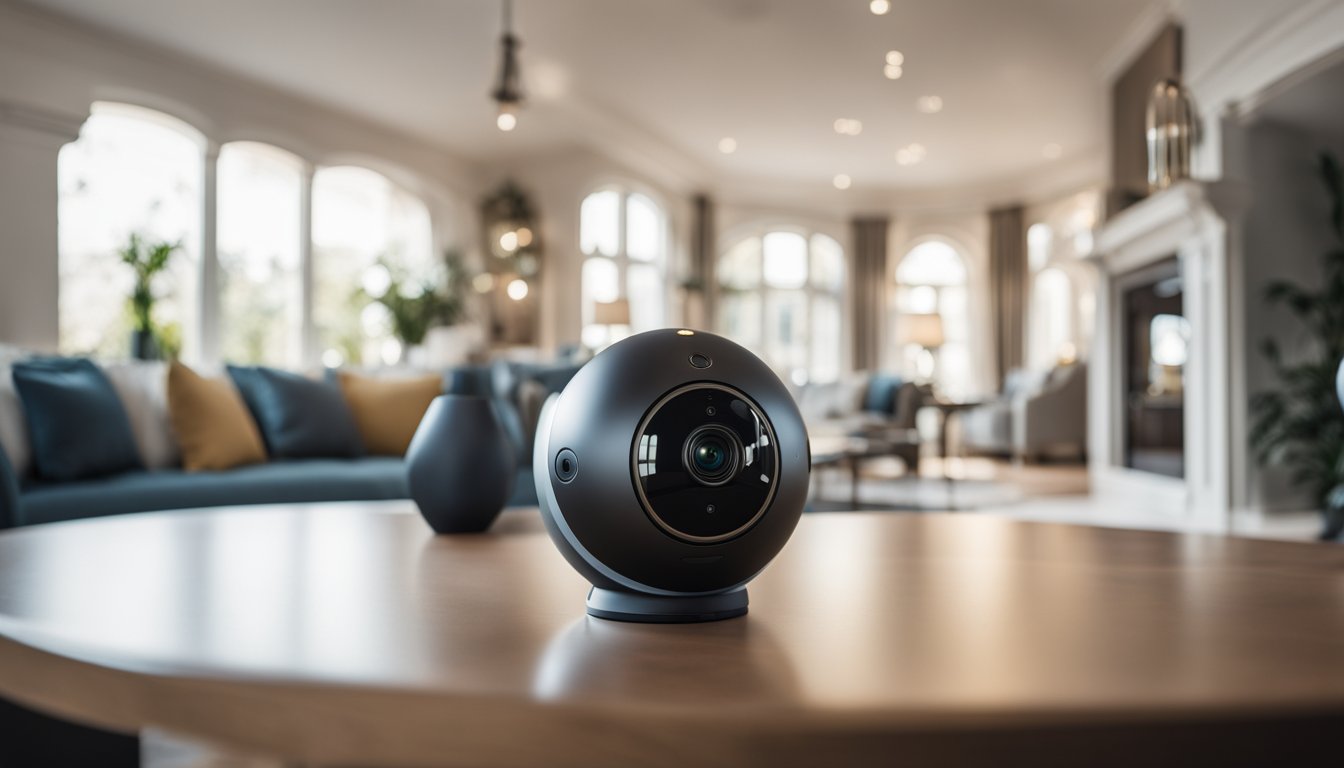
When you’re in the market for a 360 camera for real estate, it’s essential to look for specific features that will ensure your virtual tours are of the highest quality. Here’s a breakdown of what to look out for.
Image Quality and Resolution
How Does a 360 Car Camera Work? Unraveling the Technology Behind the Scenes »
The image quality and resolution of a 360 camera are pivotal because they dictate how clear and crisp your property images appear. For real estate, a camera that offers a high resolution, preferably with HDR capabilities, can capture the fine details and present homes in the best light. Cameras that support RAW file format will give you more control over the final image after processing, ideal for achieving professional results.
Ease of Use
You want a 360 camera that’s user-friendly, especially if real estate photography isn’t your primary skillset. Look for cameras with simple interfaces, straightforward connectivity to various devices, and features like an invisible selfie stick for flawless image capture. The easier it is to operate the camera, the faster you can move through properties and create attractive virtual tours.
Durability and Design
As a professional, you need equipment that’s durable and can handle the rigors of frequent use. A compact and lightweight camera is ideal for long shooting days and will be less cumbersome to carry from one property to another. Furthermore, if you anticipate shooting in various conditions, consider cameras that are waterproof or have protective cases.
Software and Integration
Finally, the camera’s software and its ability to integrate with virtual tour software are crucial. The right software can simplify the stitching of images and offer editing tools to enhance final outputs. Cameras that seamlessly integrate with platforms like Cloudpano allow for efficient tour creation, saving you time and effort in your workflow.
Camera Specs Explained
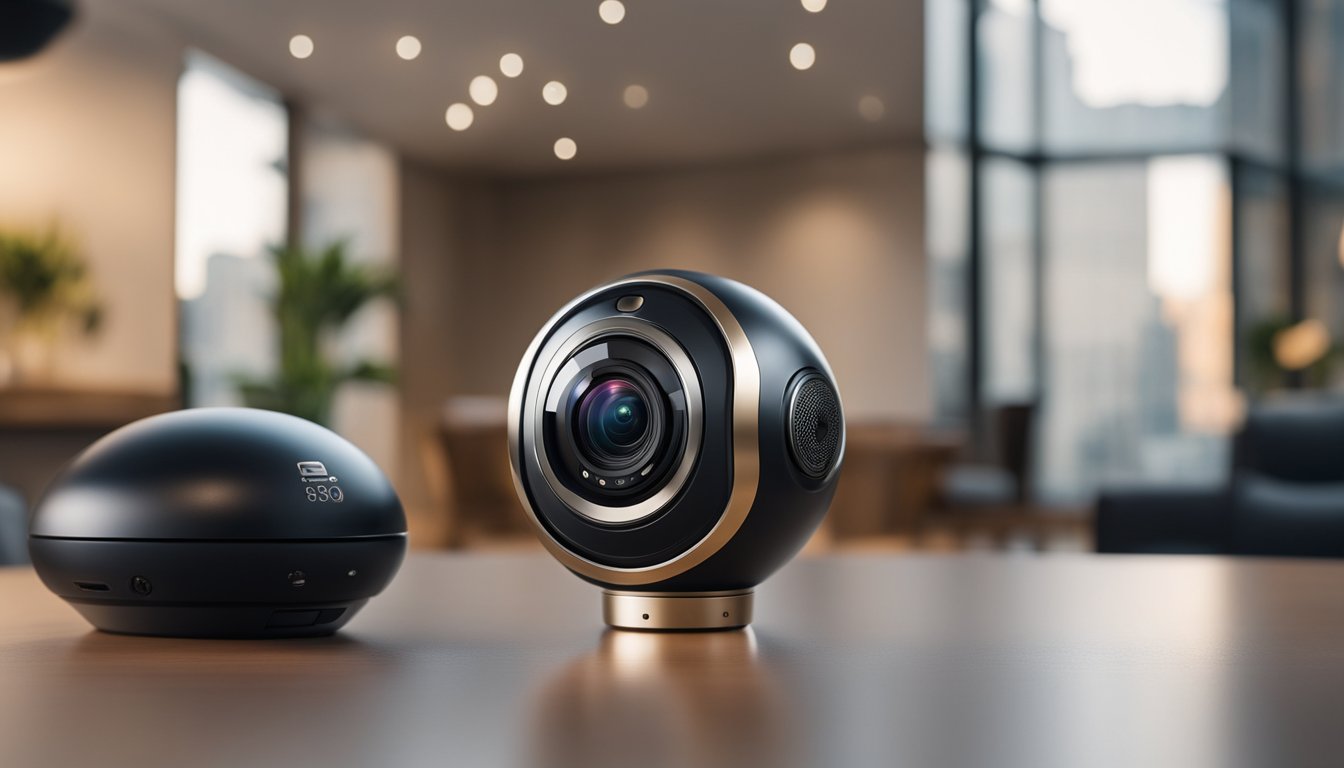
When selecting a 360 camera for real estate photography, certain specifications are critical for capturing high-quality images that stand out. Key features to look out for include HDR and low-light performance as well as stabilization and 3D technology.
HDR and Low-Light Performance
High Dynamic Range (HDR) is a feature you’ll want in a camera to achieve bright and vivid real estate photos. HDR rendering enhances images by providing better contrast and a greater range of colors, especially important in environments with varied lighting. Low-light performance is primarily influenced by the camera’s ISO settings—an adjustable feature that controls the camera’s sensitivity to light. Higher ISO values are used to capture clearer shots in darker settings, but keep in mind that going too high may introduce grain into your photos.
Stabilization and 3D Technology
Image stabilization technology is a must for producing sharp, blur-free 360 photos. Some cameras use optical image stabilization to physically adjust the lens for camera shake, while others may employ electronic stabilization. Look for advanced features such as FlowState stabilization, which can significantly smooth out video footage. Additionally, cameras that support 3D technology can create lifelike virtual tours that are engaging for viewers, enhancing the overall presentation of the property. This technology captures the depth and space exactly as human eyes would, making it a powerful tool for your real estate toolkit.
Creating Virtual Tours for Property Listings
Creating engaging virtual tours for your property listings can significantly enhance your online presence and attract more potential buyers. By using 360 photos and the right virtual tour software, you can offer an immersive viewing experience that stands out in the competitive real estate market.
Virtual Tour Software Options
To create a professional 3D virtual tour, you’ll need virtual tour software that can stitch together your 360 photos and allows you to share the tour with potential clients. Some popular options include:
- Matterport: Known for its comprehensive features and ease of use.
- Insta360 Pro 2: A 3D camera compatible with various virtual tour software options, offering high-quality imaging and efficient workflows.
Consider your specific needs, such as compatibility with your camera gear, floor plan integration, and others before making your choice.
Shooting and Editing 360 Photos
For shooting 360 photos, you’ll need a reliable 3D camera and some essential gear:
- 3D Cameras: The Ricoh Theta SC2 for entry-level users or the Insta360 Pro 2 for more advanced requirements, depending on your budget and quality needs.
- Tripod: A sturdy tripod is vital for stability and precision.
- Lighting: Proper lighting can significantly improve the quality of your shots.
Once you’ve shot your 360 photos, upload them to your virtual tour software for editing. Here, you can add hotspots, embed information, and adjust the imagery to create a seamless and interactive walkthrough of the property. Remember, the quality of your images and the navigational flow of your tour are crucial for showcasing properties effectively.
Optimizing 360 Cameras for Different Property Types
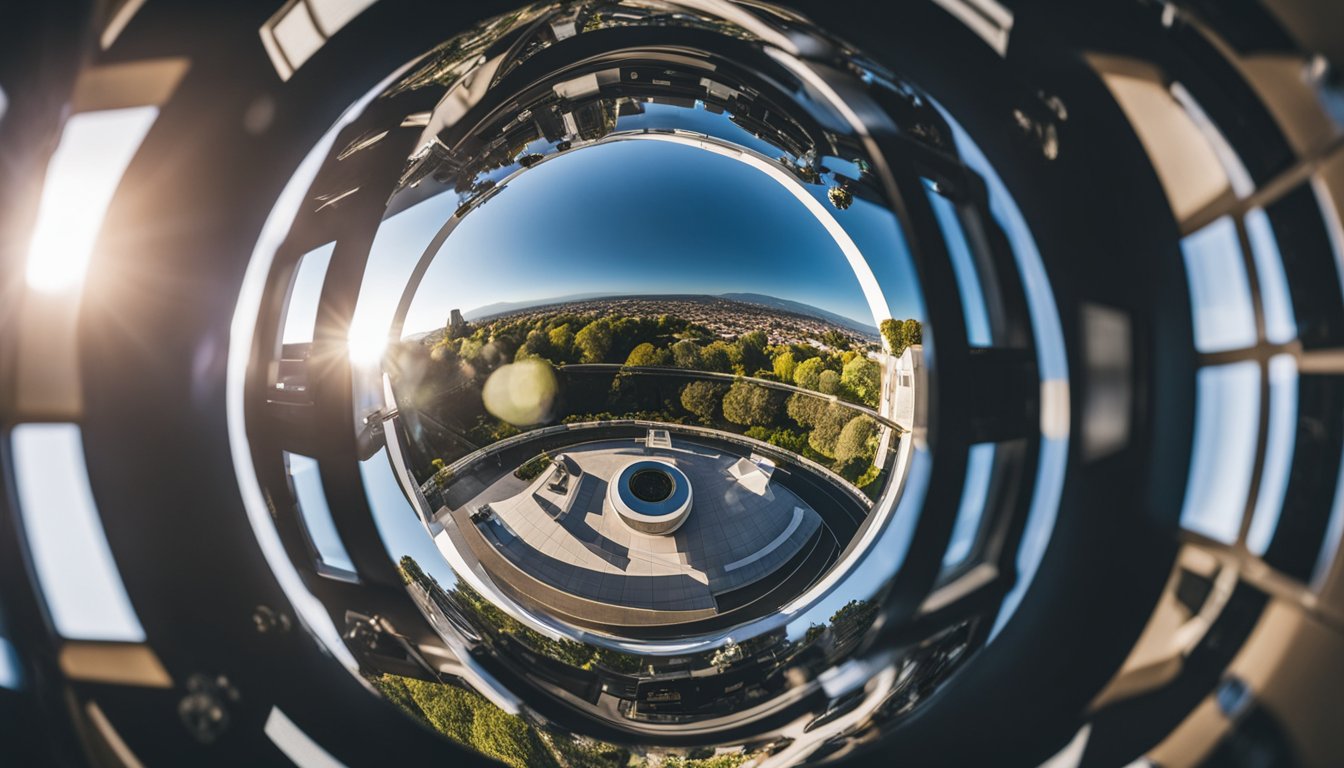
Choosing the right 360 camera for your property type can deeply enhance your real estate photos and virtual tours. You want to aim for crisp images and smooth 360 videos that can draw potential buyers in, whether you’re showcasing a cozy apartment or a sprawling commercial space.
Residential Real Estate
For residential properties, compact 360 cameras that offer high-resolution images are paramount. Matterport Pro2 shines for its detailed dollhouse views, perfect for giving potential buyers a comprehensive layout of a home. This tool is praised for its extremely accurate measurements and high-quality floor plan rendering, making it invaluable for residential listings. Also, consider the Theta Z1, noted for capturing finely detailed images with its dual back-illuminated sensors, which could be particularly useful in well-decorated interiors.
For an option that balances quality with affordability, the Insta360 ONE X2 or its newer version, the Insta360 X3, are robust choices. These cameras come with a user-friendly virtual tour kit, which includes essentials like a tripod and a microSD card. The Invisible Selfie Stick feature enables you to shoot wide-angle images without interruption.
Commercial Spaces
Commercial real estate can benefit from a 360 camera with a wider field of view to capture larger areas efficiently. A camera like the Insta360 ONE X2, with its 5.7K video resolution and FlowState stabilization, is ideal for detailed and stable imaging of expansive spaces.
For textured and nuanced shots, the Insta360 1 Inch 360 Edition is mentioned for its dual 1-inch sensors, delivering higher image quality that’s crucial for high-end commercial spaces. This allows you to highlight fine details of commercial properties, from the texture of materials to the expansive layouts, providing a virtual tour that can engage potential business clients.
Marketing Real Estate with 360 Cameras
In today’s competitive market, utilizing 360 cameras like the Insta360 One R for real estate can give you an edge. These tools help create immersive, spherical video experiences that are perfect for engagement on social media and live streaming platforms.
Social Media Integration
To maximize your property’s visibility, integrate 360 videos into your social media strategy. Platforms such as Facebook and YouTube support 360 video content, allowing your audience to explore properties with a simple swipe or turn of their device. By sharing interactive and comprehensive tours, you provide potential buyers with a unique perspective that static images can’t offer.
Live Streaming Opportunities
Live streaming an open house in 360 allows for real-time interaction with potential buyers. It’s as simple as setting up an Insta360 One R or a similar camera and broadcasting through platforms like Facebook Live or YouTube. This can significantly expand your reach, enabling interested parties to experience the property remotely as if they were there in person, which is especially useful for out-of-town clients.
360 Camera Accessories and Enhancements
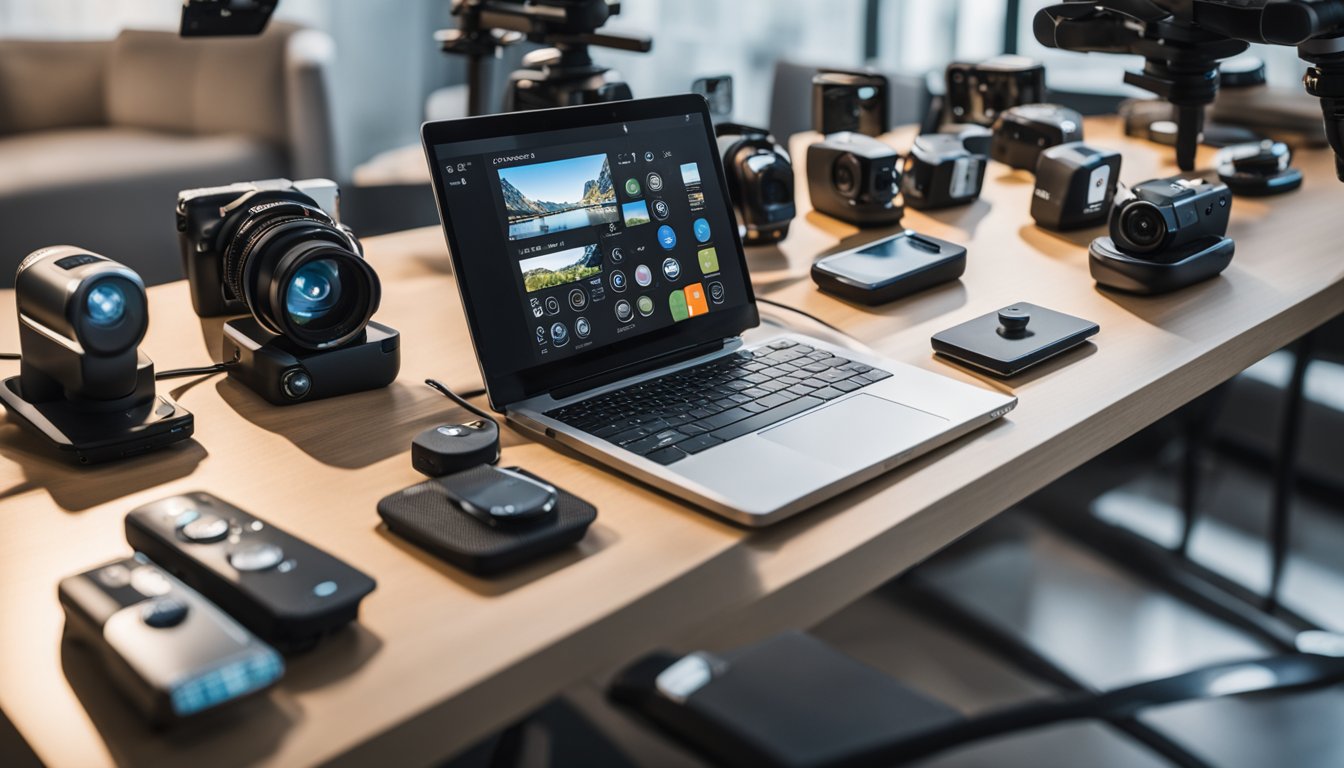
To capture stunning 360-degree visuals for real estate, you need more than just a camera. Equipping yourself with the right accessories and enhancements can vastly improve the quality and ease of your virtual tours.
Must-Have Accessories
Tripods are fundamental for stability, ensuring that your 360-degree cameras capture sharp images without blurring. For a hassle-free experience, choose a tripod that’s sturdy yet lightweight. Having a camera with a good battery life minimizes interruptions, but it’s wise to carry spare batteries for longer shoots.
An invisible selfie stick is almost magic, allowing you to take aerial shots without the stick appearing in the final footage. This is especially useful for dramatic, sweeping shots of properties.
Most 360-degree cameras offer remote operations, either via a dedicated remote control or a compatible app on your smartphone. This feature lets you adjust settings and trigger the camera from a distance, reducing the need to touch and potentially move the camera during a shoot.
Advanced Enhancements
For improved functionality, seek cameras with a modular design, enabling you to enhance or replace parts as needed. This could include high-quality lenses or additional sensors to capture better low-light performance, crucial for indoor photography.
Ensure that the camera’s app is compatible with your device, whether it’s an iPhone or an Android smartphone. Advanced apps not only offer remote control options but also assist with photo stitching and virtual tour creation, streamlining your post-production workflow.
Investing in additional gear like motion sensors or smart tracking can also set your real estate listings apart by adding interactive elements to your tours. These advanced features can captivate potential buyers with a more immersive viewing experience.
Comparing 360 Cameras to Traditional Photography
As a real estate photographer, you’re always looking for ways to showcase properties in the best light possible. You have the choice between the more traditional DSLR cameras and the innovative 360 cameras, each with its own strengths for capturing a space.
360 Photography vs DSLR
360 Photography:
- Immersion: A 360 camera provides a complete spherical view of a room, offering a virtual tour experience as if you’re standing inside the property.
- Efficiency: You can capture an entire room with a single shot, minimizing the number of photos you need to take.
DSLR Photography:
- Detail Focus: A DSLR excels in capturing high-resolution images that focus on the finer details and staging of a property.
- Control: You have more manual adjustments for exposure, lighting, and depth of field, which is ideal for highlighting specific features of a home.
| Feature | 360 Camera | DSLR |
|---|---|---|
| Field of View | 360 degrees | Limited to lens choice |
| Image Quality | Varies, generally lower than high-end DSLRs | High, with professional-grade options |
| Post-Processing | Automatic stitching of images | Extensive editing capabilities |
| Ease of Use | Easier for rapid, complete capture | Requires photography skills |
| Creative Control | Limited by the camera technology | Broad, with versatile lens selection |
When to Use Each Type
360 Camera:
Ideal for virtual tours and giving potential buyers a feel for the space. Use a 360 camera when you want to capture an entire room or property in one go, which is particularly useful for immersive online listings.
DSLR:
The go-to choice for print marketing materials and high-quality listings where detail and image quality are paramount. Use a DSLR when you need to control every aspect of the photo to create a powerful visual narrative of the property.
Budgeting for Real Estate Photography
When budgeting for real estate photography, it’s essential to balance the cost with the potential value added to your service. The goal is to invest in the best camera that provides quality results and appeals to your clients without breaking the bank.
Cost vs. Value Analysis
In considering the cost versus value in real estate photography, first determine your budget and the level of quality you aim to provide. A high-end 360 camera can produce stunning, immersive imagery that might justify a higher upfront cost, thanks to the value it adds for your clients. For instance, cameras like the Theta Z1 provide exceptional detail and quality, which can enhance the appeal of listings and potentially lead to quicker sales.
Remember, the best camera is one that balances cost-effectiveness with the ability to produce professional-grade visuals. It’s also worth considering the long-term benefits, such as the ability to charge more for listings with higher-quality images or the reduced need for reshoots due to better initial results.
Finding an Affordable 360 Camera
To find an affordable 360 camera that meets your needs:
- Start by researching cameras praised for their value, like the Ricoh Theta SC2, which offers 4K video and excellent image quality at a more approachable price point.
- Compare features vs. price across different models to ensure you’re getting the most bang for your buck.
- Consider purchasing slightly older models or looking for deals and refurbished options, which can provide high-end features at a lower cost.
- Look at reviews and testimonials from other real estate photographers to gauge which cameras provide the best value for their price.
Invest smartly by opting for a 360 camera that strikes the perfect balance between affordability and quality, ensuring you can deliver great results to your clients without overextending your budget.
Tech Advances and Future Trends
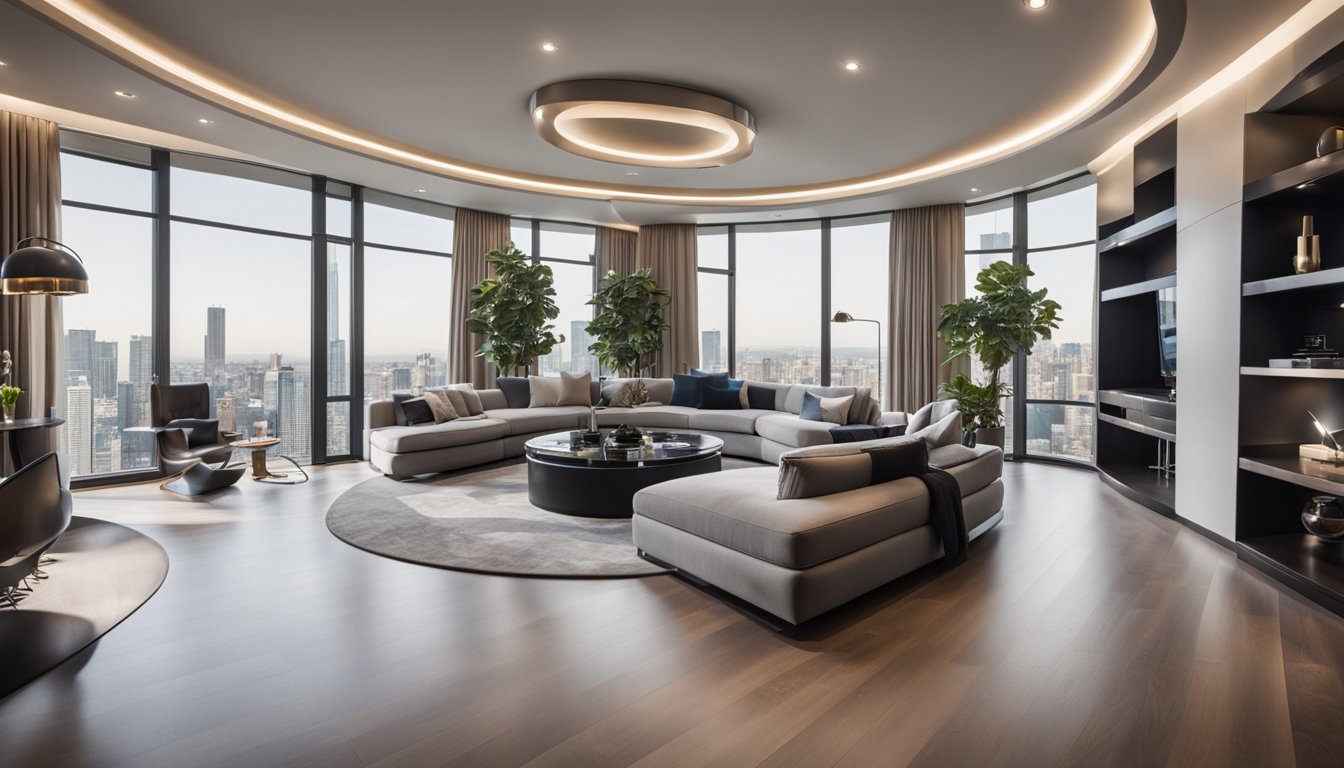
Advancements in 360-degree camera technology are transforming how you capture and present real estate properties. With emerging gear, you’re bound to see a shift in how estates are showcased, making the experience more immersive and detailed than ever before.
Emerging 360 Camera Technology
The arrival of cameras like the Insta360 ONE RS with its 4K Boost Lens, has revolutionized the way properties are visualized. The Super 5.7K resolution allows for crisper imagery, ensuring every corner of a property is showcased in vivid detail. Additionally, features such as Horizon Leveling and PowerPano offer unparalleled capabilities to capture one-shot panoramic images without distortion, providing potential buyers a seamless 360-degree view.
Camera systems have also started implementing 3D imaging capabilities, allowing the creation of virtual environments. When paired with a VR headset, these images deliver an immersive experience that’s as close as you can get to physically touring a property.
Real Estate Industry Future Proofing
To stay ahead, real estate professionals are adopting new 360-degree cameras like the Samsung Gear 360. This allows for high-quality footage that can be quickly shared and viewed on various platforms. The future trend is moving towards greater integration with virtual reality, offering clients a more dynamic and interactive property viewing experience.
As technology progresses, these cameras are becoming more user-friendly, encouraging wider adoption among real estate agents keen on offering top-tier marketing materials to their clients. Your gear could soon become an essential tool in real estate marketing, making it easier for you to connect with a remote audience and close deals more efficiently.
Frequently Asked Questions
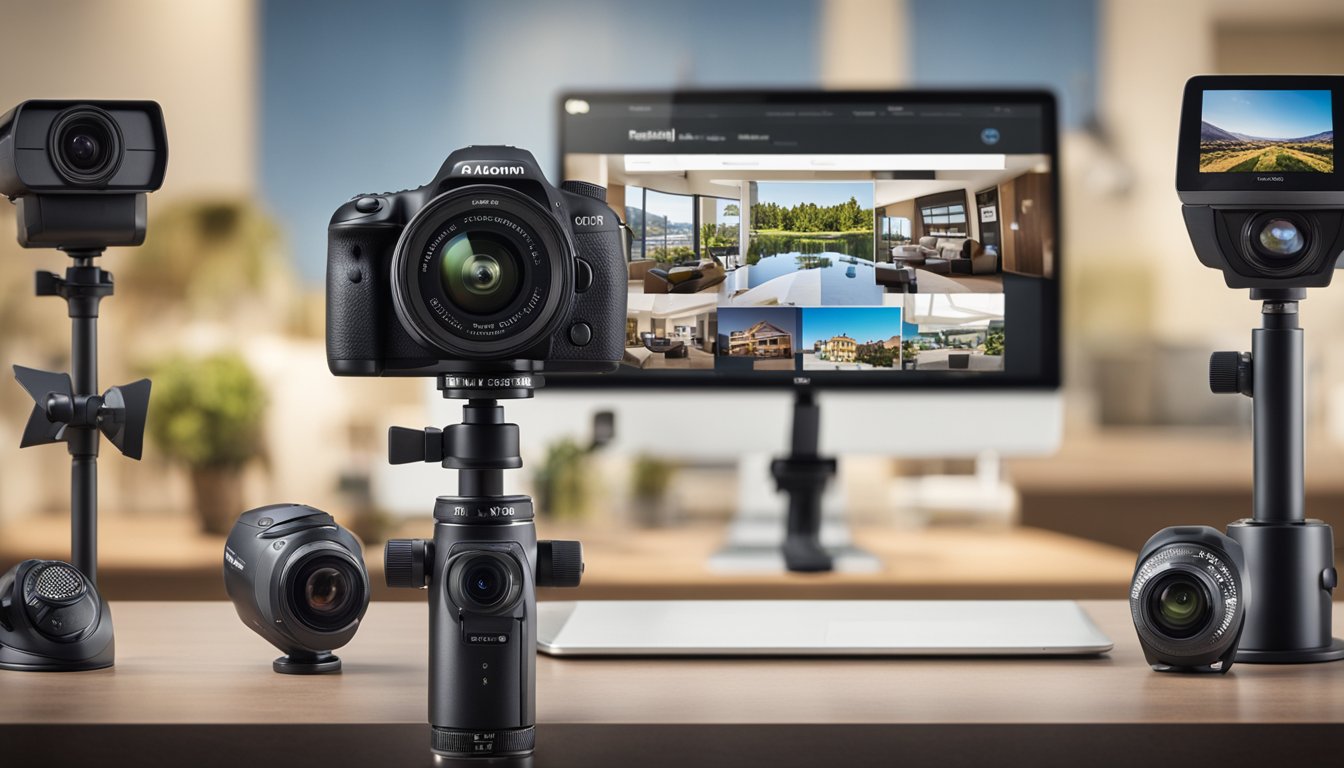
This section addresses common inquiries about finding and using 360 cameras specifically for real estate purposes, providing you with focused insights to enhance your property showcases.
What is the most cost-effective 360 camera for real estate photography?
For real estate photography where budget is a key concern, you may find cameras like the Theta Z1 offering a balance of quality and affordability. It provides detail in images even in lower light conditions, which is a plus for interior shots.
How do Matterport cameras compare to other 360 cameras for real estate?
Matterport Pro2 is considered top-of-the-line in the real estate domain, known for its high-quality imaging, accurate measurements, and floor plan rendering, setting it apart from many other cameras.
Can GoPro Max 360 be used effectively for real estate virtual tours?
Yes, the GoPro Max 360 can be used for real estate due to its capability to shoot immersive 360-degree videos, which are key for virtual tours. However, it may not be as specialized as other cameras designed specifically for real estate photography.
What features should I look for in a 360 camera for architectural photography?
In a 360 camera for architectural photography, prioritize high resolution for stills and videos, good dynamic range, and manual exposure settings to handle challenging lighting. Stabilization features are also important to ensure smooth and professional-looking output.
How do I capture high-quality 360 photos for real estate listings?
To capture high-quality 360 photos, use a camera with a high resolution like the Kandao QooCam, ensure proper lighting, and employ a sturdy tripod to avoid blurring. Taking multiple shots at different exposures can also be beneficial.
Are there any particular benefits to using Ricoh 360 cameras in real estate?
Ricoh 360 cameras, like the Ricoh Theta series, are known for their ease of use, portability, and quality, making them a good choice for real estate applications where quick and efficient shooting is required without compromising on image clarity.







